Went to Gamesday last Sunday, some pics can be found here. On the queuing fun, have to say GW were quick to apologise – got an e-mail from the CEO today promising this won't happen again.

September 27, 2011
August 14, 2011
A Space Marine
So young Eddie, master organiser of Apocalyptic delights, sent the below to a few of us back in April:
"Hello all. I'm formulating an Apoc formation for Chapter master P-Fisty's honour guard - and I hit upon the idea of getting all my hobby heroes to paint a marine to represent them! As such, if you want too, will you be in my honour guard?
Each marine has artificer armour, a boltgun, bolt pistol and power weapon. You can swap for a relic blade, and also have the option for a auxiliary grenade launcher! All I ask is you paint the right shoulder pad black for me to put the storm legion icon on."
So, below is my contribution. I painted a Space Marine, I feel dirty…
(If anyone is interested I can detail how I painted it, but to first put credit where it is due, I lifted the gold painting method from All Things 40K, and the power sword scheme from From The Warp - except they both do it much better than me).
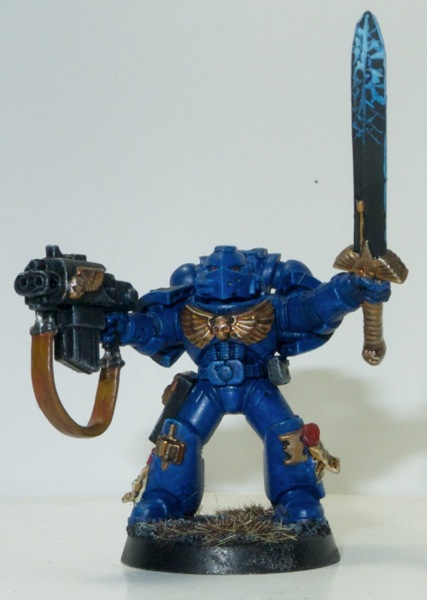
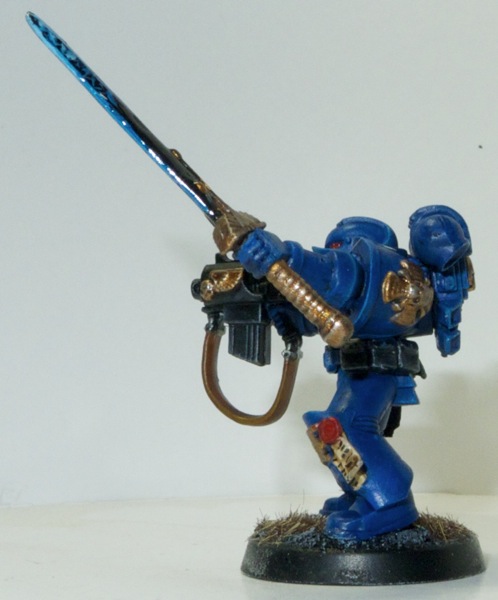
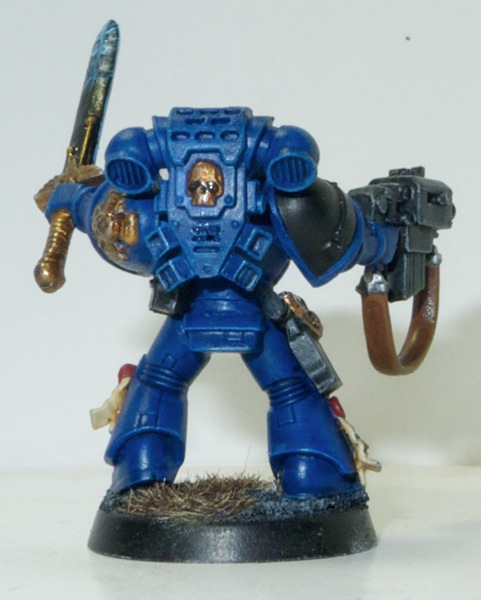
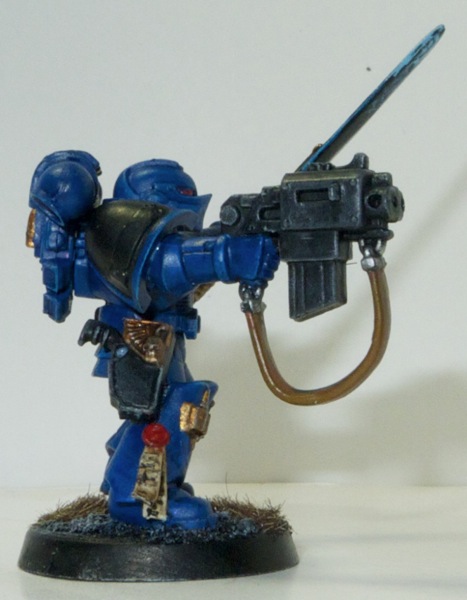
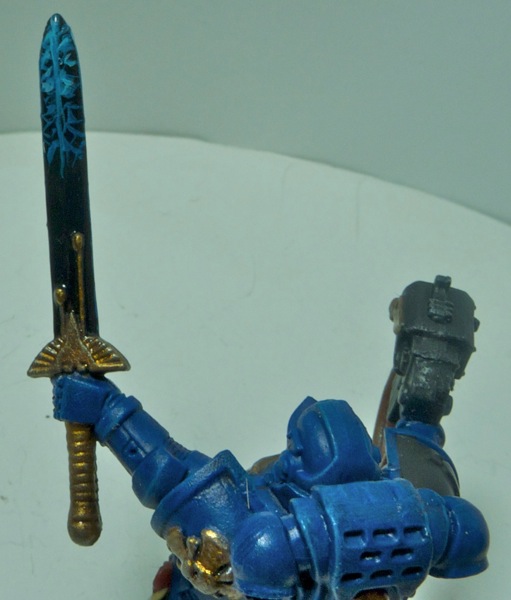
July 19, 2011
Pylon - assembling the cannon
May 03, 2011
ApocaFez - January 2011
April 21, 2011
Pylon – fixing the focussing array
The focussing array is them six "whiskers". I have tried a number of methods for fixing them.
For the first pylon I built, I went with magnets (two per). Unfortunately, they were not that strong and I ended up with some droopy whiskers. So at the last moment I added a pin (that's the whisker to the left below). For the second pylon, I went with two pins and no magnets (right, below). This one makes for a sturdy link, however each time I put the whiskers on I'm a bit concerned that I'll damage the holes.
For the third pylon, I decided to go back to magnets – because if I can't magnetise something, I get that very annoying feeling that I've failed somehow. This time around however, I went with rod magnets (1/8" x 1/4"), so I get the benefits of pins as well. So far, so good…
April 20, 2011
Arac Attack!
It's not the first time the local arachnids have taken an interest in my Necrons. Below is a much larger critter that decided to visit my first pylon. It does look a bit drowsy (well that paint does emit some serious fumes), but went away alright in the end.
(and then people wonder why I'd rather stay inside…)
April 17, 2011
Pylon - assembling the axle
April 09, 2011
Pylon progress
So yes, it's been a while, but at long last I've been making progress. The thing with pylons is, they're big. If you want to take them with you, you pretty much have to go flat-packed. Like so:
On the pylon side, I drilled 3 roughly equidistant holes, glued the magnets in, waited for everything to dry, and then added a spot of paint on top of the magnets. I pressed the other part while the paint was wet, which gave me the place to drill…
… I then drilled where the paint was, put on more magnets (taking care I got the polarity right), and here we are:
While I was at it, I assembled the centre of the pylon: glued the 3 parts together, then added 1mm brass rod in 4 places. The rod is not flush, the idea is to fill the hole with a bit of green stuff. It was quick to do, and ensures the thing will not break apart. The joint in the middle will be filled with green stuff as well - easier than spending time trying to get the two parts fit exactly.
February 27, 2011
Back to the pylon
So it's been a long while, but at long last I'm back with the pylon. First step is to build the base. I've pinned the legs, using a cunningly crafted template to ensure the holes match on both sides. It certainly helps speeding things up too, as this needs to be repeated for all 6 legs.
One side of the template is marked 'hub', the other 'rim', to help ensure I don't drill the holes the wrong way around. An alternate method would be to drill the guiding holes in the exact centre of the template, but I could not be bothered.
And that's all for now.
January 08, 2011
Distraction
Then, the legs - 4 sprues with 6 legs each. Only 20 are needed, the extra number is to help with posing – which is nice.
One other sprue holds 2 mandibles (extreme left), and 20 "tertiary velocitators" – small legs going in between the main ones.
Last, the manipulators. This is the part I had most trouble with, I found them quite fragile. The good news is that as they are very light, any breaks can easily be glued back.
The documentation provided by ForgeWorld is quite good, just thought I'd expand a bit on the assembly of the forcipules. The below picture indicates how all the bits fit together.








































